7 days with stays, meals, transfers, guided sightseeing in Thimphu, Punakha & Paro including Tiger’s Nest hike.
Bhutan
06 Nights / 07 Days
On Request
Feel free to reach out to us anytime to know more about our tour packages and customize your perfect getaway.
OR INQUIRY NOW
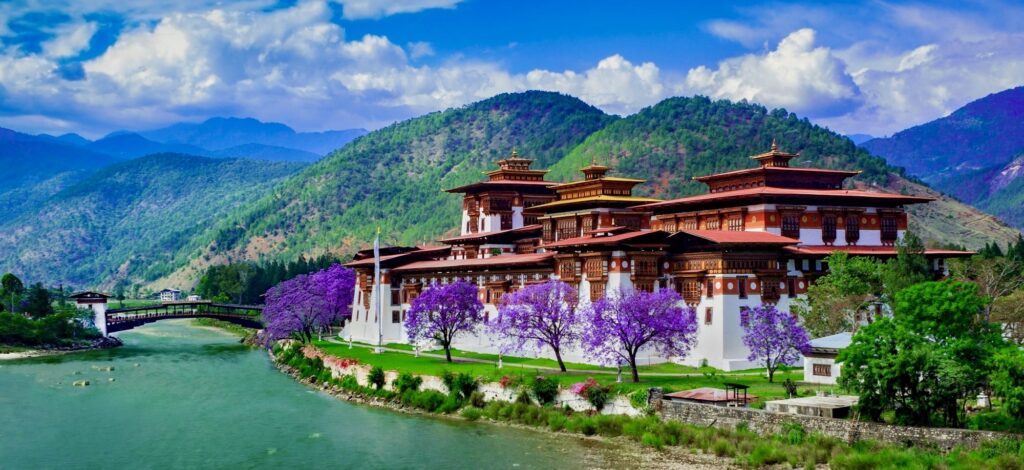
The flight to Paro is one of the most spectacular in entire Himalayas. Flying along the Himalayan range from Kathmandu or over Himalayan foothills if flying over Kolkata, the journey offers fascinating views and an exciting descent into the Kingdom. Bhutan’s first gift to you as you disembark from the aircraft will be cool, clean fresh mountain air.
After immigration formalities and baggage collection you will be welcomed by our representative with a ‘tashi khaddar’ (white scarf offering to the guest which is an auspicious way to welcome guest) and drive to Thimphu, the capital town of Bhutan. The road leads through the Paro valley to the confluence of Paro and Thimphu rivers at Chuzom (confluence).
Shortly before reaching Chuzom, you will see on your left Tamchog Lhakhang, the temple built by Thangtong Gyalpo, a pioneering engineer who introduced the construction of suspension bridges into Bhutan and Tibet (several of which are still in use today). The present bridge to Tamchog Lhakhang was restored in 2005 in the design of a traditional style with iron chains and crossing this iron bridge is a wonderful experience. (approx. 50 min, roundtrip walk).
On arrival, in Thimphu check-into the hotel. The capital town of Bhutan and the centre of government, religion and commerce, Thimphu is a unique city with unusual mixture of modern development alongside ancient traditions. With the population of about 1,30,000 it is perhaps still the world’s only capital city without a traffic light.
Later in afternoon visit National Memorial Chorten, a large white structure crowned with a golden spire. It is located close to the center of Thimphu city and is one of its most iconic monuments. This is the most ideal spot to interact with locals who throng in large numbers to circumambulate the chorten, whirl the large red prayer wheels and pray at a small shrine inside the gate. The paintings and statues inside the monument provide a deep insight into Buddhist philosophy.
Afterwards an exploratory walk around Thimphu main street and market area.
Overnight at the hotel in Thimphu (Altitude 2,320m).
Morning after breakfast, take a short drive to the north of town to Buddha Dordenma, located atop a hill in Kuenselphodrang Nature Park. The statue fulfils an ancient prophecy dating back to the 8th century A.D that was discovered by Terton Pema Lingpa (Religious Treasure Discoverer) and is said to emanate an aura of peace and happiness to the entire world. This massive statue of Shakyamuni made of bronze and is gilded in gold, measures 51.5 meters in height, making it one of the largest statues, in Bhutan. 125,000 smaller Buddha statues have been placed within the Buddha Dordenma statue, each of these also have been cast in bronze and gilded.
Bhutan is known for its innovative postage stamps and The Postal Museum showcases the progress of postal services and also to some extent communication system in Bhutan & country’s rare and unique stamps issued over the years. Also visit the Postal office located next door to get your own personalised postal stamps made and check out various souvenirs.
Then drive to Textile Museum. With the opening of Textile Museum, under the patronage of Her Majesty the Queen Ashi Sangay Choden, Bhutanese textile have reached new heights as one of the most visible distinct art forms. The textile museum has opened its exhibition on six major themes – warp pattern weaves, weft pattern weaves, role of textiles in religion, achievements in textile arts, textiles from indigenous fibres and the Royal collection.
Post lunch, for an insight into traditional crafts of Bhutan, visit National Institute for Zorig Chusum, established in 1971, it is the premier institute to preserve and promote thirteen traditional art and crafts of Bhutan. Commonly known as Arts & Crafts School or Painting School, the Institute offers 4-to-6-year courses in 13 traditional arts and crafts of Bhutan.
This is followed by visit to The Folk Heritage Museum, dedicated to connecting people to the Bhutanese rural past through exhibits, demonstrations, educational programmes and documentation of rural life.
Then explore Centenary Farmers Market. Popularly known as Weekend market, this bustling, colourful market centre is the biggest where farmers from different part of the country gather to sell their farm products. With its wide assortment of products including handicrafts and its picturesque and colourful setting, the Farmer’s Market is a favourite spot for many.
Conclude the sightseeing of the day with visit to Trashichhoedzong, ‘fortress of the glorious religion’. This is the center of government and religion, site of monarch’s throne room and seat of Je Khenpo or Chief Abbot. Built in 1641 by the political and religious unifier of Bhutan, Zhabdrung Ngawang Namgyal, it was reconstructed in 1960s in traditional Bhutanese manner, without nails or architectural plans.
Evening at leisure in Thimphu city centre. Overnight at the hotel in Thimphu (Altitude 2,320m).
Following breakfast, embark on a drive to reach the Dochu-la pass, situated at an elevation of 3,088 meters (approximately 10,130 feet). Pause briefly at this point to soak in the magnificent scenery and appreciate the chorten, mani wall, and prayer flags that adorn this high-altitude location. If the skies are clear, you’ll have the opportunity to behold a panoramic view of the following peaks from left to right: Masagang (7,158m), Tsendagang (6,960m), Terigang (7,060m), Jejegangphugang (7,158m), Kangphugang (7,170m), Zongphugang (7,060m), which resembles a table mountain and presides over the remote region of Lunana, and finally, Gangkar Puensum, the loftiest peak in Bhutan, soaring to an impressive 7,570 meters.
At Dochula Pass, a collection of 108 chortens or stupas, known as Druk Wangyal Chortens, was commissioned by Ashi Dorji Wangmo Wangchuk, the eldest Queen Mother. These chortens are structured in three tiers: the first and lowest level contains forty-five chortens, the second tier has thirty-six, and the top tier includes twenty-seven, encircling the central main chorten.
Continue your journey onward to Punakha. Once the capital of Bhutan and the seat of government until 1955, Punakha still serves as the winter residence of the Je Khenpo, the chief abbot. Nestled in a temperate climate and blessed with natural drainage from the Pho Chhu (male) and Mo Chhu (female) rivers, the fertile Punakha valley yields abundant crops and fruits.
After a satisfying lunch, explore the Punakha Dzong, also known as the Palace of Great Happiness, constructed at the confluence of the Phochu and Mochu rivers in 1637 by Zhabdrung Ngawang Namgyal. This grand dzong served as both a religious and administrative centre in Bhutan’s history. It spans approximately 600 by 240 feet and features a six-story gold-domed tower. Within its walls, you’ll encounter courtyards and religious sculptures that offer glimpses into the depth of history and spiritual traditions embedded here. Your knowledgeable guide will provide insights into this intricate culture, which may be exotic to outsiders but has thrived here for generations.
Then walk across Punakha Suspension Bridge, gracefully suspended over the gushing waters of the Mo Chhu River, is a marvel of engineering and a thrilling experience for visitors. Spanning approximately 160 meters, it ranks among Bhutan’s longest suspension bridges and provides a unique perspective of the picturesque Punakha Valley. With prayer flags fluttering in the wind and the river’s roar below, crossing this bridge offers an exhilarating blend of natural beauty and cultural significance.
Later in the afternoon, enjoy a brief excursion to Chimi Lhakhang, also known as the temple of fertility. Perched on a hillock in the heart of the valley, this temple is renowned for the belief that couples struggling with infertility are blessed with children shortly after visiting and offering prayers here. The trail leads through rice fields to the quaint settlement of Pana, which means ‘field.’ Strolling through the village near the temple provides you with rare insights into the daily lives and lifestyles of the villagers.
Conclude your day with an overnight stay at the hotel in Punakha, situated at an altitude of 1,300 meters.
Morning after breakfast, a beautiful hike takes you to the regal Khamsum Yuelley Namgel Chorten (approx. 2-hour round trip walk), which was built to remove negative forces and promote peace, stability and harmony in the changing world. The Chorten dominates the upper Punakha Valley with commanding views across the Mo Chhu and up towards the mountainous peaks of Gasa and beyond.
After lunch, visit Wangduephodrang Dzong, a historical fortress with its roots tracing back to 1638 when it was founded by Zhabdrung Ngawang Namgyal. Perched atop a high ridge nestled between the Punak Tsang Chhu and Dang Chhu rivers, this dzong offers a magnificent vantage point overlooking the valley below. Wangdue Dzong holds a significant place in Bhutan’s history due to its strategic location. It allowed the Penlop (Governor) of Wangduephodrang to safeguard the crucial routes to Trongsa, Punakha, Dagana, and Thimphu, solidifying his position as the third most influential ruler after the Governors of Paro and Trongsa. After being damaged by fire in 2012, the dzong has been meticulously restored to its original grandeur and splendour, a process completed in 2022.
Following your dzong visit, explore the captivating Rinchengang village, which sits atop a hill opposite the Wangduephodrang Dzong, just above the West-East national highway. The village’s unique charm lies in its traditional mud houses, clustered together with an ancient allure that distinguishes it from other Bhutanese villages. Rinchengang boasts a close-knit community, and according to local legends, its early settlers were recruited by the revered saint Zhabdrung Ngawang Namgyal in the early 17th century from Cooch Bihar in India, initially as skilled construction laborers for the Wangdue Dzong’s construction. Their exceptional craftsmanship in stone masonry contributed significantly to the dzong’s completion, earning them a permanent settlement in this village. Rinchengang is considered one of Bhutan’s oldest villages, and it still preserves its time-honoured customs and traditions. Surrounded by terraced rice fields, the village is a delightful 15-minute walk from the highway, offering a splendid view of Wangduephodang Dzong and the meandering Punatsang Chhu river.
Overnight at the hotel in Punakha. (Altitude 1,300m)
After breakfast, drive to Paro along scenic highway. On arrival in Paro, check into the hotel.
The beautiful valley of Paro encapsulates within itself a rich culture, scenic beauty and hundreds of myths and legends. It is home to many of Bhutan’s oldest temples and monasteries, National Museum and country’s only international airport. Mount. Chomolhari (7,314m) reigns in white glory at the northern end of the valley and its glacial water plunge through deep gorges to form Pa Chhu (Paro River). Paro is also one of the most fertile valleys in the Kingdom producing a bulk of the locally famous red rice from its terraced fields.
Post lunch, proceed to visit Ta Dzong, originally built as Watchtower, which now houses National Museum. The extensive collection includes antique thangkha paintings, textiles, weapons & armour, household objects and a rich assortment of natural and historic artifacts.
Ta Dzong visit immediately followed by a short walk down the trail to visit Rinpung Dzong (Paro Dzong), meaning (“fortress of the heap of jewels”), which has a long and fascinating history. Along the wooden galleries lining the inner courtyard are fine wall paintings illustrating Buddhist lore such as four friends, the old man of long life, the wheel of life, scenes from the life of Milarepa, Mount. Sumeru and cosmic Mandala.
Walk in to visit a traditional farmhouse. These charming structures, often adorned with intricate woodwork and painted in vibrant colors, are a testament to Bhutan’s architectural heritage. Visitors have the opportunity to experience the warmth of Bhutanese hospitality, savor authentic local cuisine, witness traditional farming practices, and immerse themselves in the tranquil ambiance of the countryside. It’s a unique and enriching way to connect with the traditions and way of life that have endured for generations in this picturesque region of Bhutan. Here you’ll also have opportunity to try your hand in Archery using traditional bamboo bow & arrow. Archery is Bhutan’s national sport and integral part of all special occasions.
Conclude your day with a comfortable overnight stay at the hotel in Paro, situated at an altitude of 2,280 meters.
After breakfast, embark on a fascinating excursion to Taktshang Monastery or Tiger’s Nest (approx. 5 hours round trip walk). It is one of the most famous of Bhutan’s monasteries, perched on the side of a cliff 900m above the Paro valley floor. Legends say that Guru Rinpoche arrived here on the back of a tigress and meditated at this monastery and hence it is called ‘Tiger’s Nest’. This site has been recognized as a most sacred place and visited by Zhabdrung Ngawang Namgyal in 1646 and now visited by all Bhutanese at least once in their lifetime.
Late afternoon, drive end of the Valley to newly restored Drukgyel Dzong. Built by Zhabdrung Ngawang Namgyal in 1646 to commemorate an early military victory over Tibetan invaders, the dzong name means, indeed, ‘victorious Druk’. Historically and strategically, this Dzong withstood all its glory and was featured in 1914 vide National Geographic magazine. The glory of Drukgyel Dzong remained even when it was destroyed by fire in 1951. On a clear day, one can see the commanding view of Mount. Chomolhari (7,314m) from the village, below the Dzong.
While driving to Paro town, stop en route at the 7th century Kyichu Lhakhang, one of the 108 temples built in the Himalayas by Tibetan King, Songtsen Gampo. The building of this temple marks the introduction of Buddhism in Bhutan.
Evening explore Paro local market and city centre. Overnight at the hotel in Paro (Altitude 2,280m).
After breakfast, transfer to the airport for flight to onward destination.
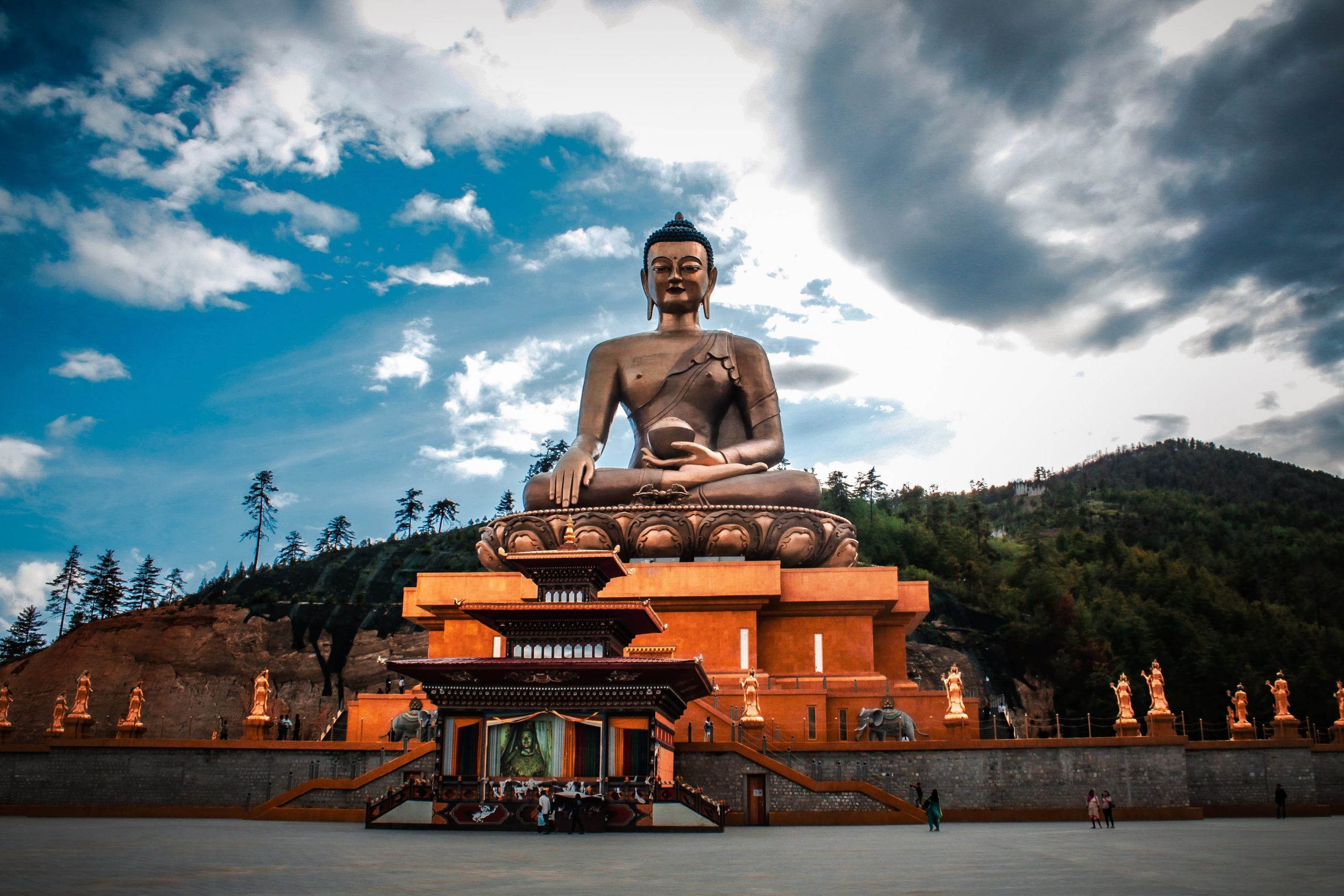
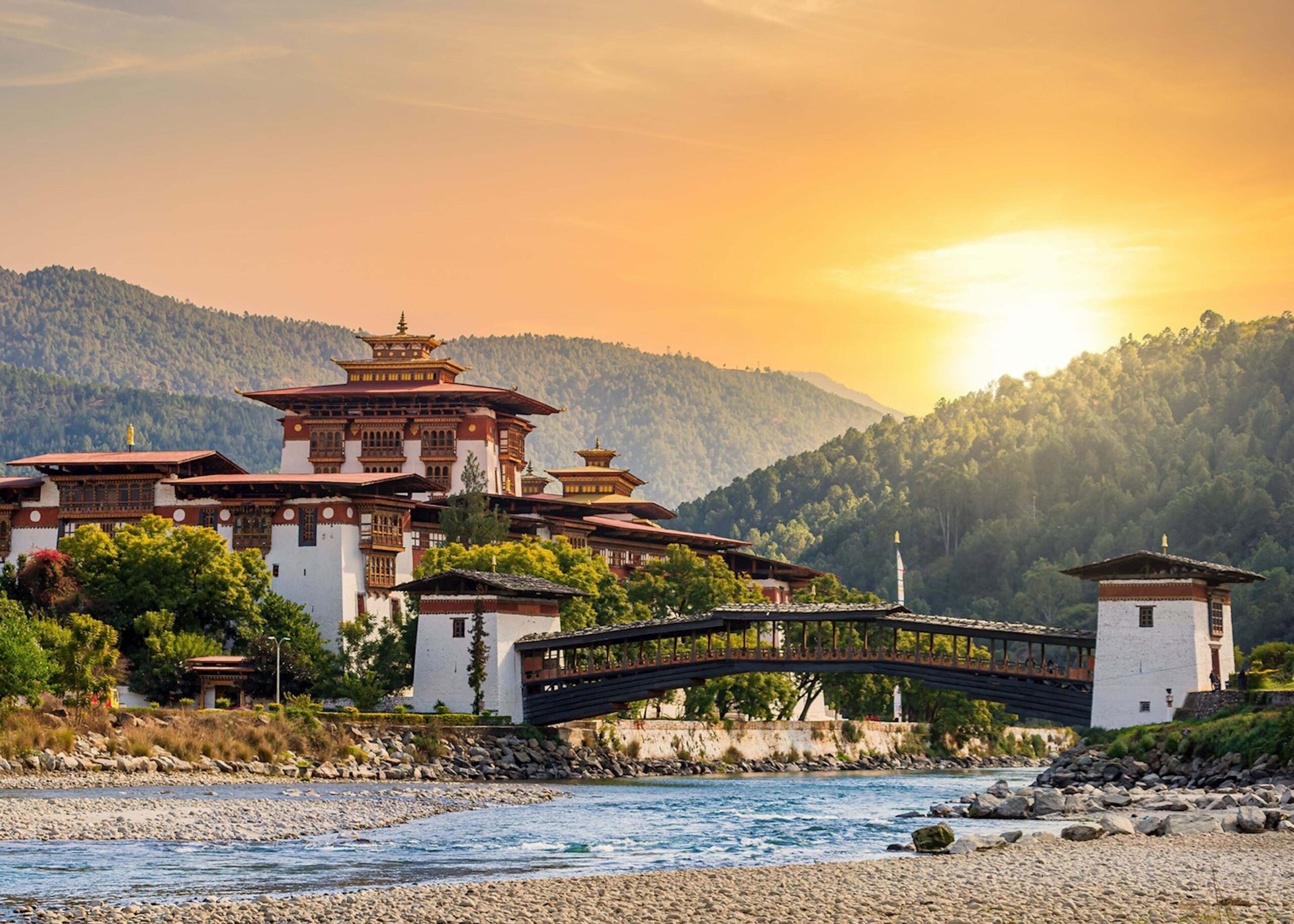
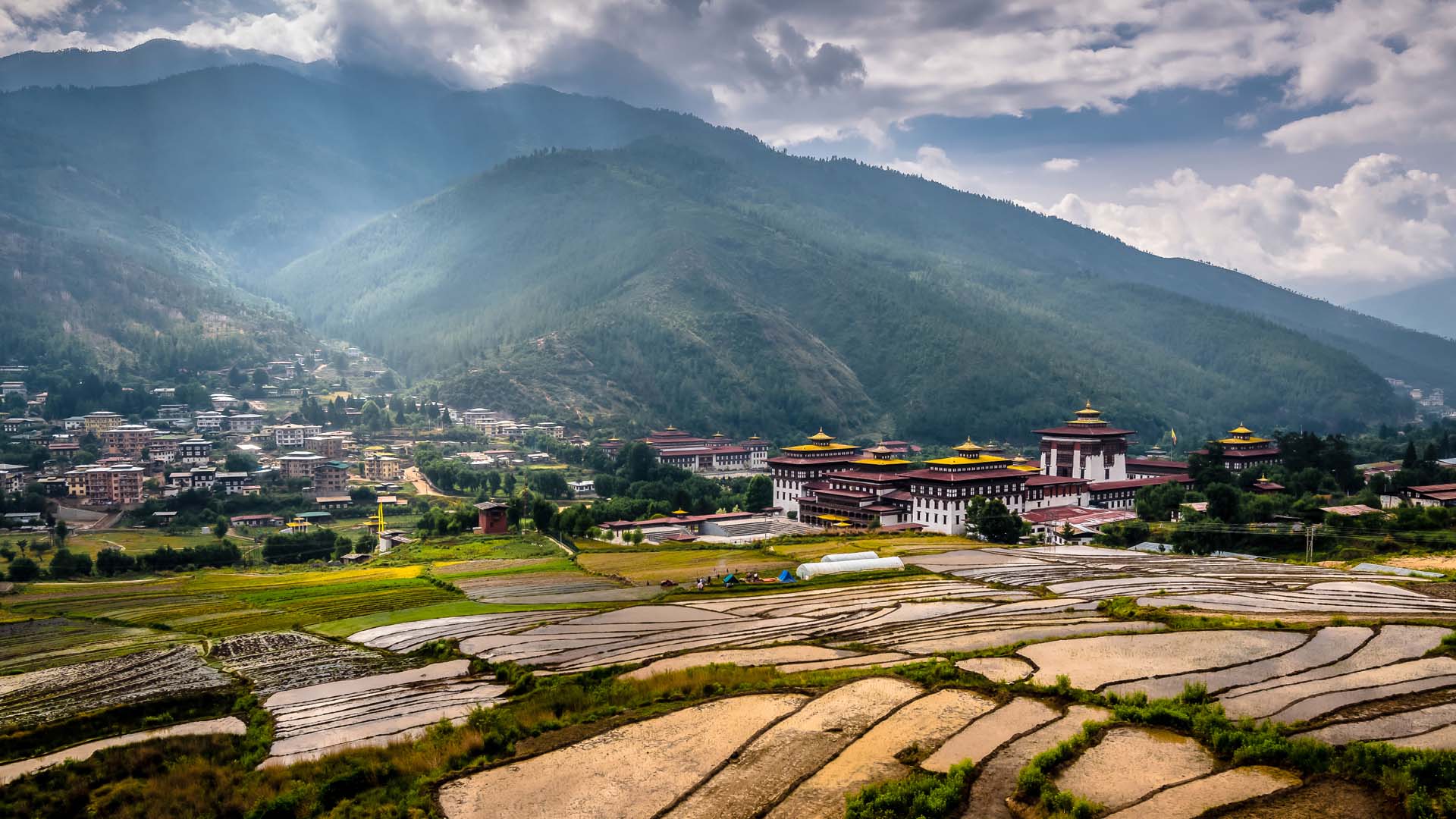
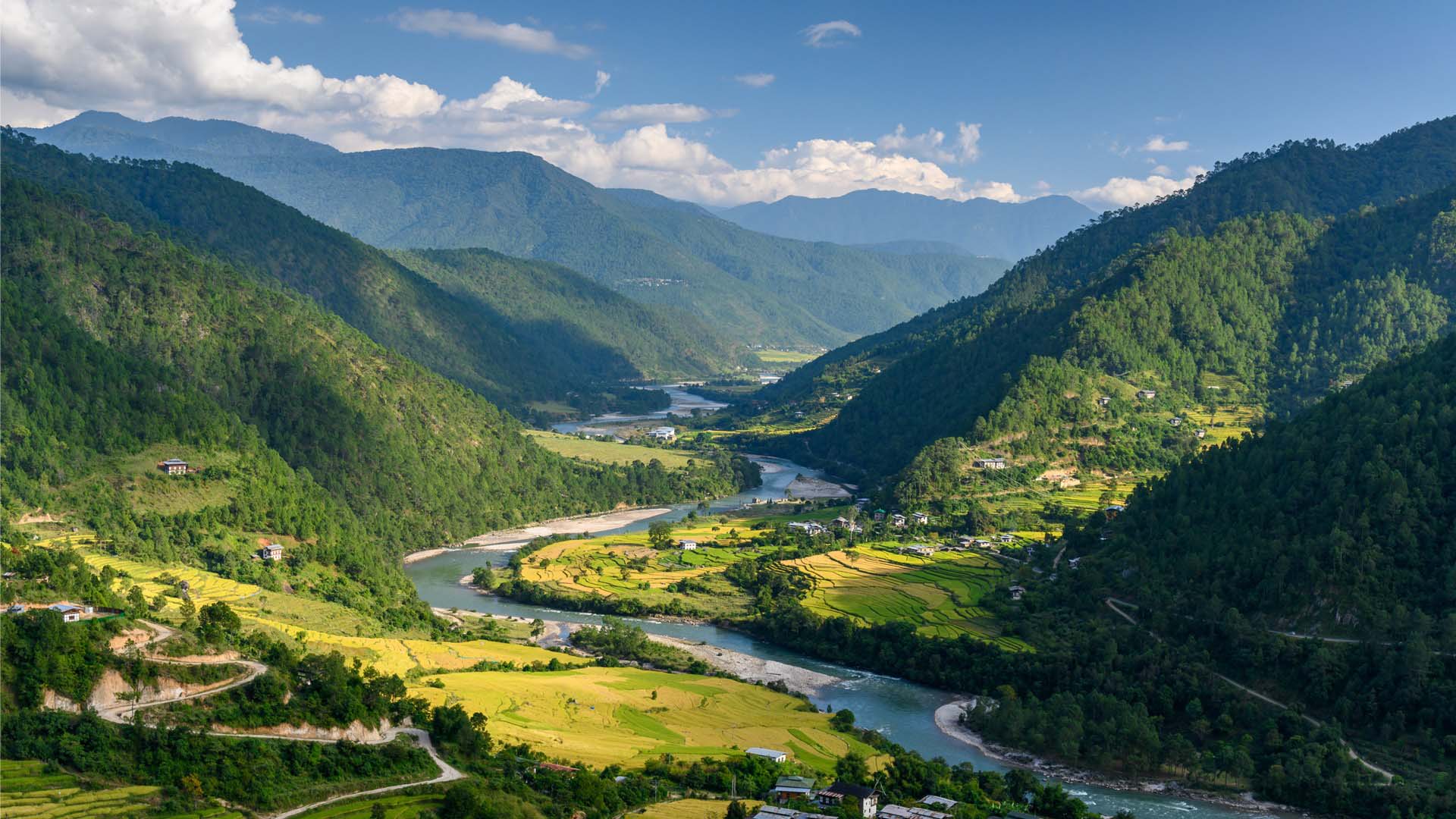
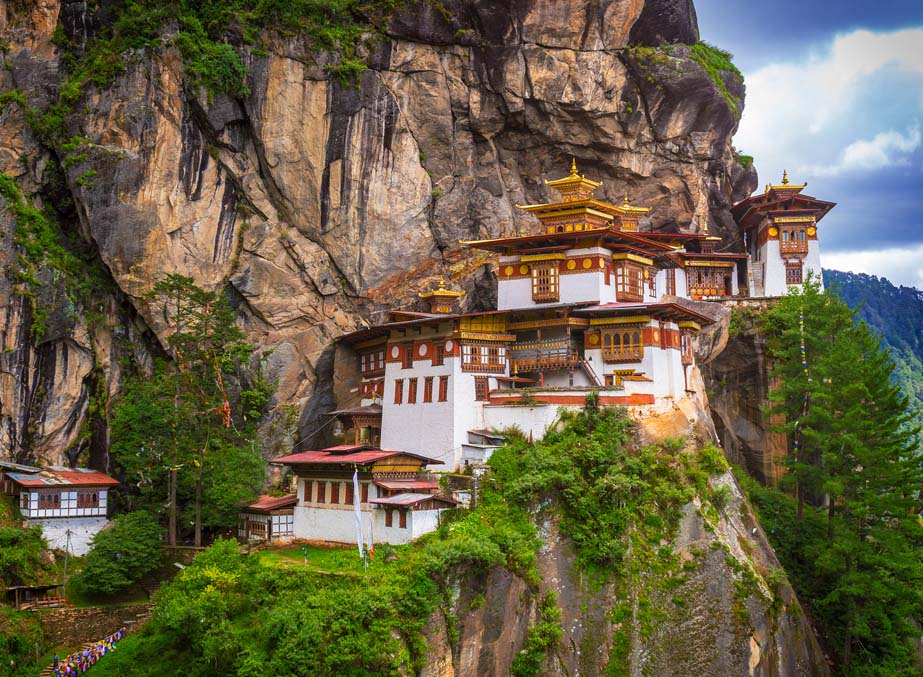
Reach out today to unlock exclusive travel deals and personalized support. Whether you’re dreaming of a world tour or a local escape, we’re here to make it unforgettable.
A: Trivandrum, Kerala, India
Created by Phoenix Creatives
Copyright © 2025. All rights reserved by India Tour Designer